Grill-Roasted Stuffed Pork Loin: Indirect Heat for Delicious Results
After the initial, requisite summer grilling run on hamburgers and hotdogs, dedicated outdoors cooks will turn their gaze to more complex, more involved, more—dare I say it?—interesting dishes. I know, I know—I’ve ranted and raved about the qualities of a good burger, but from a cooking standpoint a burger doesn’t offer the excitement of some other dishes. If you crave something that is fun to make as well as eat, this stuffed pork loin fits the bill nicely.
Even under normal circumstances (read: cooking inside in your kitchen), stuffed pork loin is not only impressive to put on the table, but fun to make. But take the impressive factor and amp it up by cooking this usually staid and stolid dish outside on the grill and you’ll be on the fast road to “cooking legend.”
As we all know, pork loin is easy to dry out and overcook, so we’ll be explaining the thermal principles you need to follow to grill—yes, grill—a stuffed pork loin. Temps are important if you want a juicy, tender pork loin, and we’re going to give them to you. Grab your Smoke X2™ and let’s hit the grill.
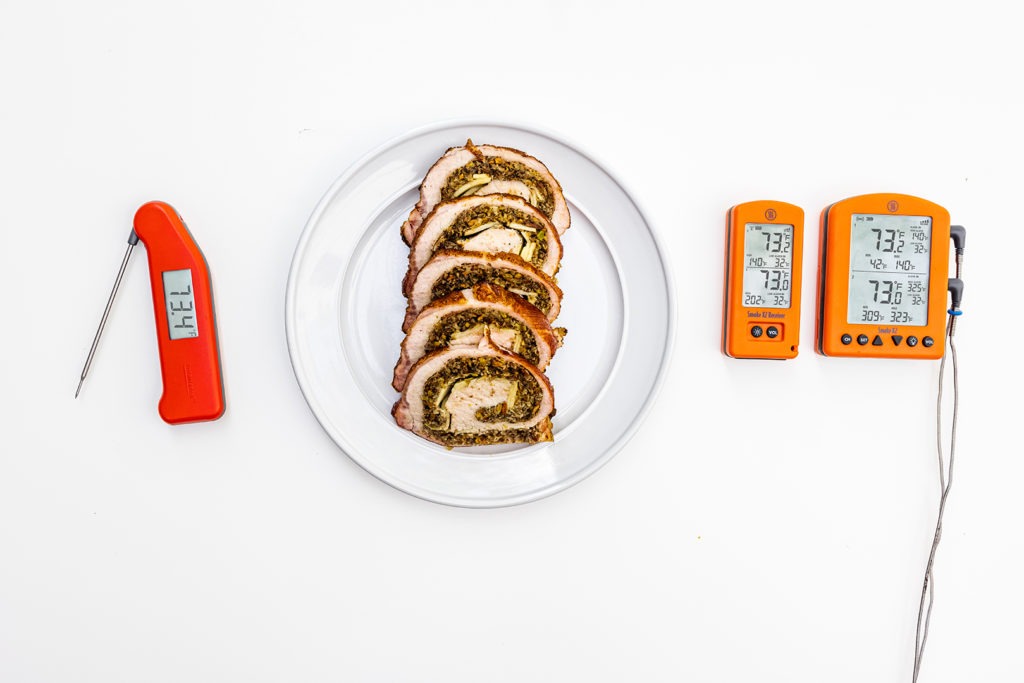
Roasting on a grill: indirect heat is key
The words “grilling” and “barbecuing” are often used interchangeably, but they are actually different cooking techniques. Whereas grilling works best with quick-cooking foods that are smallish in size or foods that are individually portioned, barbecuing and grill-roasting work best with larger, slower-cooking foods. It may help to think of grilling, grill-roasting, and barbecuing along a cooking-time continuum.
—Master of the Grill, America’s Test Kitchen
Taking a large, long piece of meat to the grill poses a thermal conundrum: grilling is usually a high, direct-heat cooking method that will easily overcook the outside of a roast to a blackened crisp before the internal temperature reaches its target. So how do we achieve the proper ambient cooking temperature for a roast on the grill? The solution is simple:
- Set up a two-zone fire to create a moderate temperature inside the grill, and
- Cook the roast over the indirect heat side of the grill.
- If you have a Kamado-style grill, as we did for this cook, you can start up your fire and use the ceramic deflector plate to create an indirect-heat cooking environment.
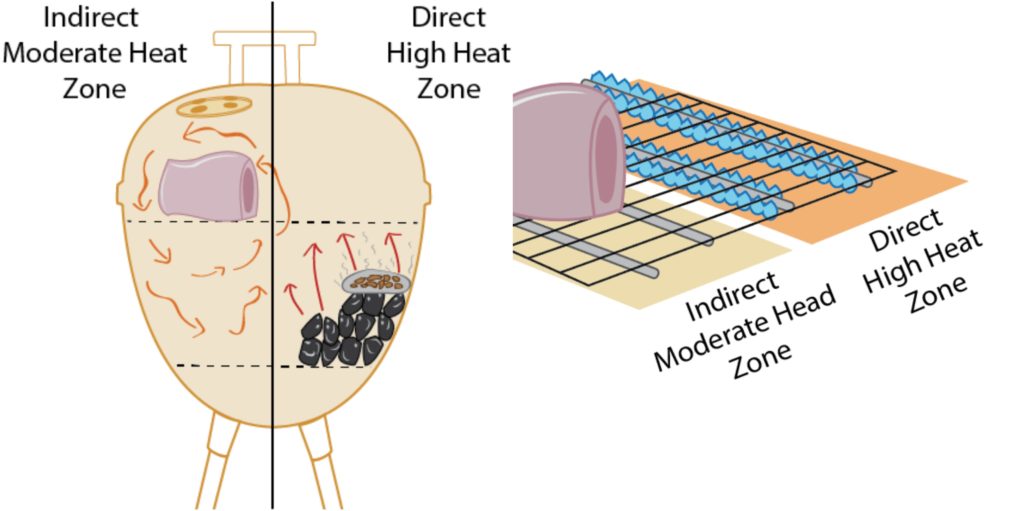
The moderate ambient grill temperature with indirect heat cooks the meat more gently, and is a perfect setup to turn your grill into a smoker for large, tough cuts like pork shoulder and brisket, as well! Indirect heat on the grill is also best when preparing sweet foods like pineapple or meats with sweet sauces to avoid burning the sugars, allowing them to cook to their sticky-sweet best.
The most essential concepts an outdoor cook needs to understand [are] the importance of temperature control, the differences between direct heat and indirect heat, and how to use a 2-zone setup.
—Meathead Goldwyn, AmazingRibs.com
The key to indirect cooking is temperature control. When grill roasting, or even smoking, you need to keep an eye on the temperatures to know whether they’re getting too hot—or too cold. The high/low alarms of Smoke X2 are necessary to keep the grill’s temperature in the necessary thermal window. Of course, if you want to make it even easier, you could also use Billows™ BBQ Control Fan, which works in conjunction with Smoke X2 to not only monitor grill temps but actually change them. In this case, we were looking for an indirect temperature of 325°F (163°C). (There’s no need to cook a pork loin low-and-slow, as there’s very little connective tissue that we need to dissolve.)
How to butterfly and stuff a pork loin
Why and how to butterfly?
Butterflying is a simple butchering technique used to even-out the thickness of meat prior to cooking. But more than that, in this case, butterflying allows us to fill and roll the whole pork loin. By exposing more surface area to our seasonings and filling, we create a more flavorful, delicious dish. Oh, and it also looks great.
Pork loin is a perfect candidate for butterflying because it is a solid muscle that cuts very cleanly and stays together once thinned out.
To butterfly a loin, lay it on a cutting board and, using a sharp knife, cut into the loin about 1/2″ from the cutting board surface, parallel with the cutting board until you have cut to about 1/2″ from the far edge. Then flop the loin open and cut into the new thick piece, as you did before, unrolling the loin one cut at a time until the whole thing has been unrolled to a (relatively) even thickness of about 1/2″.
Filling the pork loin
Whatever filling you’re using to stuff your pork loin, you don’t want it to be too thick. One-half inch is about as deep as you want to fill it, as you’ll still need to roll it up and tie it together. Too much filling will cause it to spill out. (Tip: using some breadcrumbs to bind your filling together a bit can keep it from crumbling out the edges.)
For this recipe, we wanted flavors that were rich and full and also played well with the classic pork palate. I took a jumping-off point for the filling recipe from Steve Cylka at The Black Peppercorn and added some touches I wanted in my dish. We used mushrooms for umami meatiness, leeks, 2 bacon, fennel, prosciutto, parm, pistachios, and tart Granny Smith apples. You can play with the proportions on this or you can make your own filling up altogether, but I’ll tell you that there were a lot of very happy ThermoWorkers when we finally served this one up.
Tie it up! After butterflying and filling the pork, it is secured tightly with kitchen twine to hold it together in its roast shape, allowing for even cooking throughout.
Temperatures for grilling pork loin
Center-cut pork loin has a satisfying meaty texture, but its lack of fat can cause it to dry out in a flash. In this recipe the addition of a flavorful, moist filling helps to ensure a juicy end result.
While a good filling helps to combat perceived dryness, pulling your roast from the grill at the right temperature is the best way to be sure the meat doesn’t end up dry and tough. It’s important to remove the meat from the grill before too much moisture is lost, but it’s also important to reach the USDA’s safe doneness temperature of 145°F (63°C). To see that we didn’t overcook, we pulled our loin at 140°F (60°C), allowing it to carryover up to our desired finish temp. Do this, and you’ll have a tender, juicy pork loin every time.
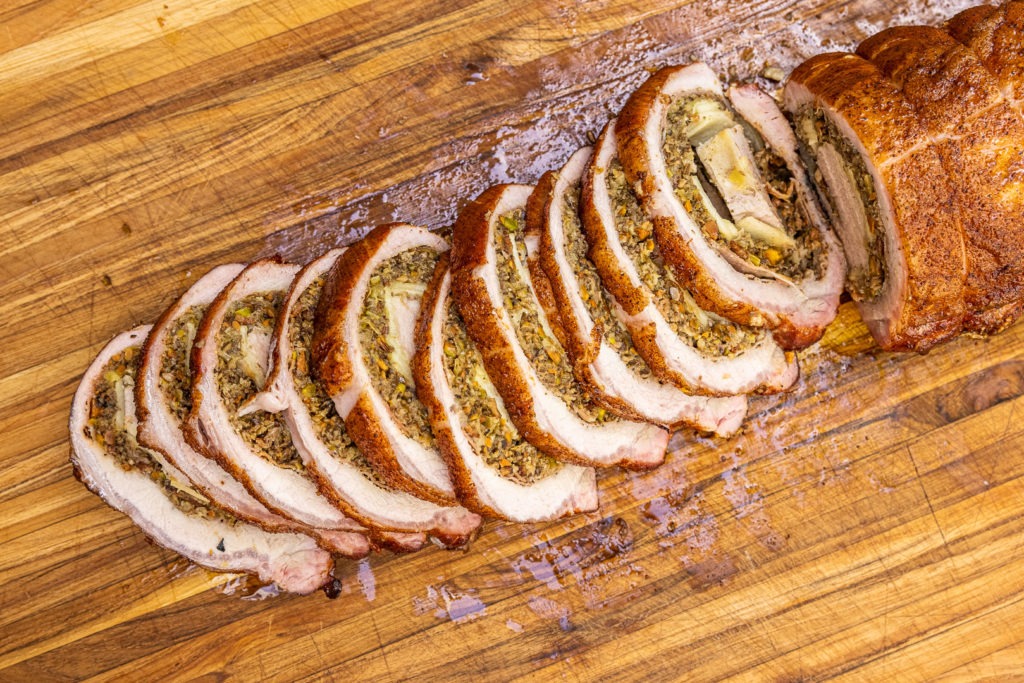
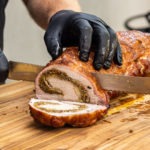
Grill-Roasted Stuffed Pork Loin recipe
Description
Grill-roasted stuffed pork loin. The method comes from Master of the Grill by America’s Test Kitchen. The recipe is based on the ideas from Steve Cylka of The Black Peppercorn.
This roast takes about 2 hours to cook.
Ingredients
- 1 boneless pork loin, 3.5–5 pounds
- 8 slices thick-cut bacon
- 1 Tbsp fennel seed, chopped coarsely
- 3 medium leeks, white and light-green parts only, sliced and rinsed
- 1 lb crimini mushrooms chopped
- 1/2 C (1 stick) butter
- 1 C breadcrumbs
- 1 C roasted, salted pistachios, chopped rather finely
- 1/2 C coarsely shredded Parmesan cheese
- 3 oz thinly sliced prosciutto (substitute other thin-sliced ham if desired)
- 2 Granny Smith apples
- Salt and pepper to taste
- BBQ rub of your choice (something on the sweet side is nice for this)
Instructions
Preheat your grill with a setup for indirect cooking. Use Smoke X2 and Billows to get the internal temperature up to 325°F (163°C) while you prepare the loin. Use some wood chunks for delicious smoked flavor.
Make the filling
- Chop the bacon and cook it in a large pan over medium heat. You want the bacon to get nice and cooked and to render all of its fat.
- Add the chopped fennel seed and cook in the fat for 15–30 seconds, until quite fragrant and toasty smelling.
- Drain the leeks well and add them to the pan, sauteing until they are well wilted, and start browning around some of their edges.
- Add the butter to the pan and cook to melt it.
- Add the chopped mushrooms to the pan and stir, cooking until the mushrooms have cooked out a lot of their water and start to brown around the edges of the pan.
- Remove from heat and allow to cool somewhat.
- Stir in the breadcrumbs, pistachios, and Parmesan cheese.
- Taste and adjust salt and pepper accordingly.
Butterfly the pork and stuff it
- Lay the pork on the cutting board and make a cut along the length of the loin, 1/2″ above the board and parallel to it. Continue this cut through the loin until the knife is about 1/2″ from the opposite side of the loin.
- Open the loin like a book, there will be a thick side and a thin side.
- Repeat this action on the new thick side, unrolling the pork loin as you go.
- Repeat a third time, if you can.
- Salt and pepper the surface of the pork loin
- Lay the slices of prosciutto on the surface of the loin, covering as much of it as you can, but not worrying that it is all covered.
- Spoon the mushroom filling onto the surface of the loin, atop the prosciutto. Spread it as needed to cover the loin by about 1/2″. You may have extra filling.
- Lay the thin-sliced apples atop the mushroom filling. You may have extra apple slices.
- Roll the pork loin back up.
- Tie the loin with butcher twine, making a knot about every inch along the length.
- Coat the exterior of the roast with a light dusting of BBQ rub.
Cook the roast
- Place the tied, seasoned roast in the grill and insert the meat probe from your Smoke X2 into the center of the roast.
- Set the high-temp alarm on the meat channel for 140°F (60°C) and cook the roast.
- When the alarm sounds, verify the temperature with a Thermapen®. If you don’t see a temperature lower than 140°F (60°C), remove the roast from the grill and let it rest for a few minutes before slicing it up. If you find any lower temperatures, adjust the position of your meat probe and continue to cook until the true lowest temp in the meat has reached your pull temp.
- Slice the roast and serve.
Shop now for products used in this post:


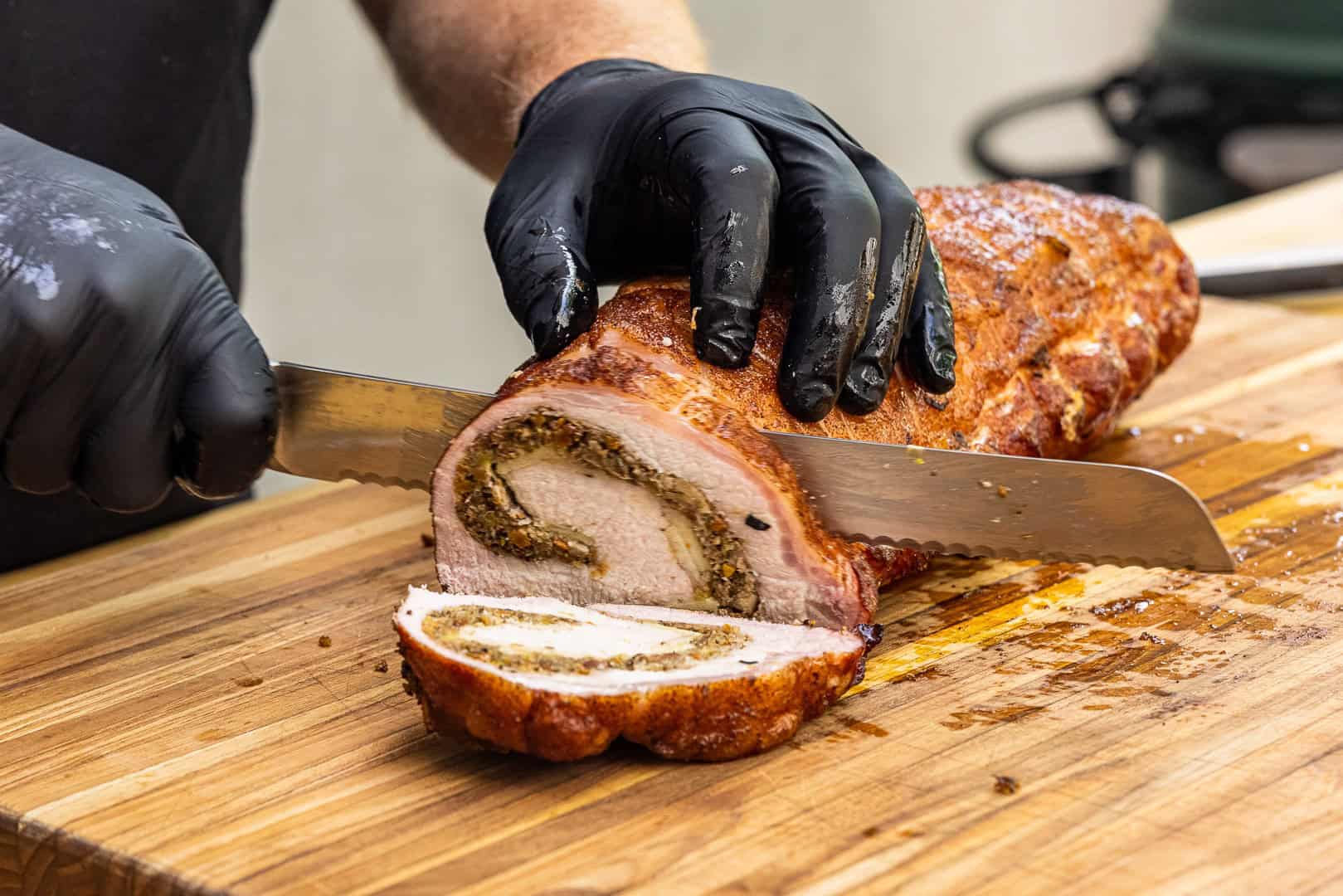
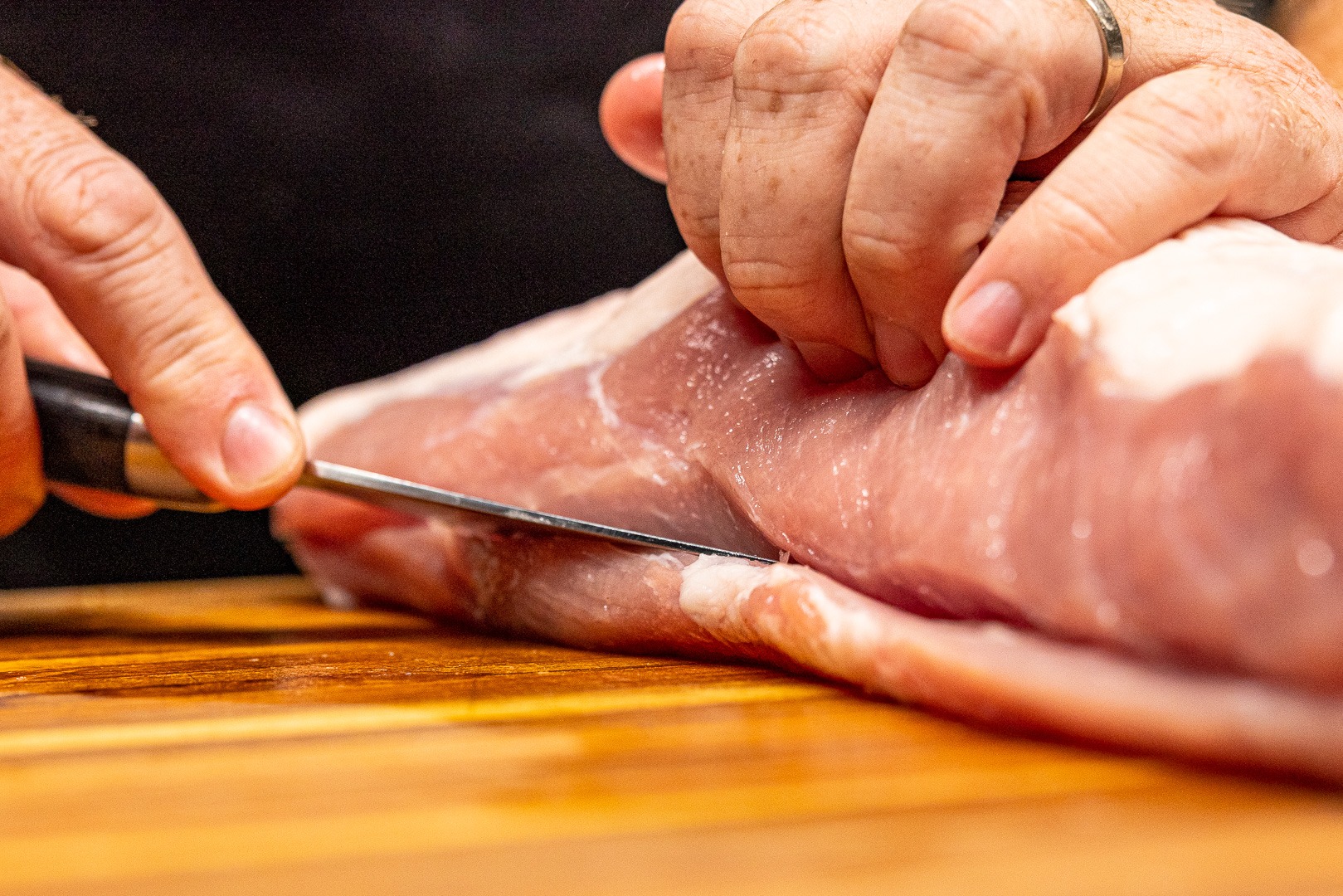
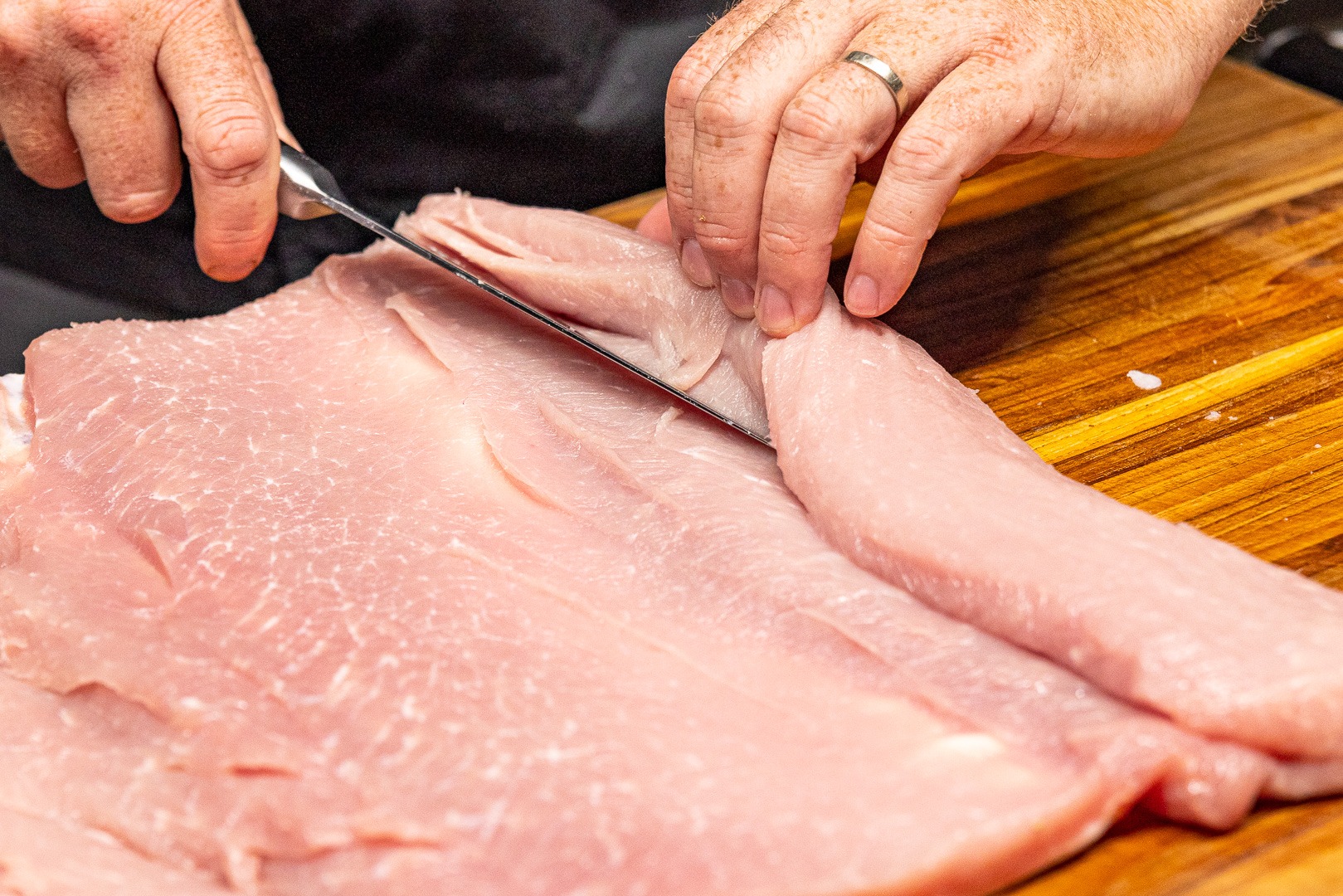
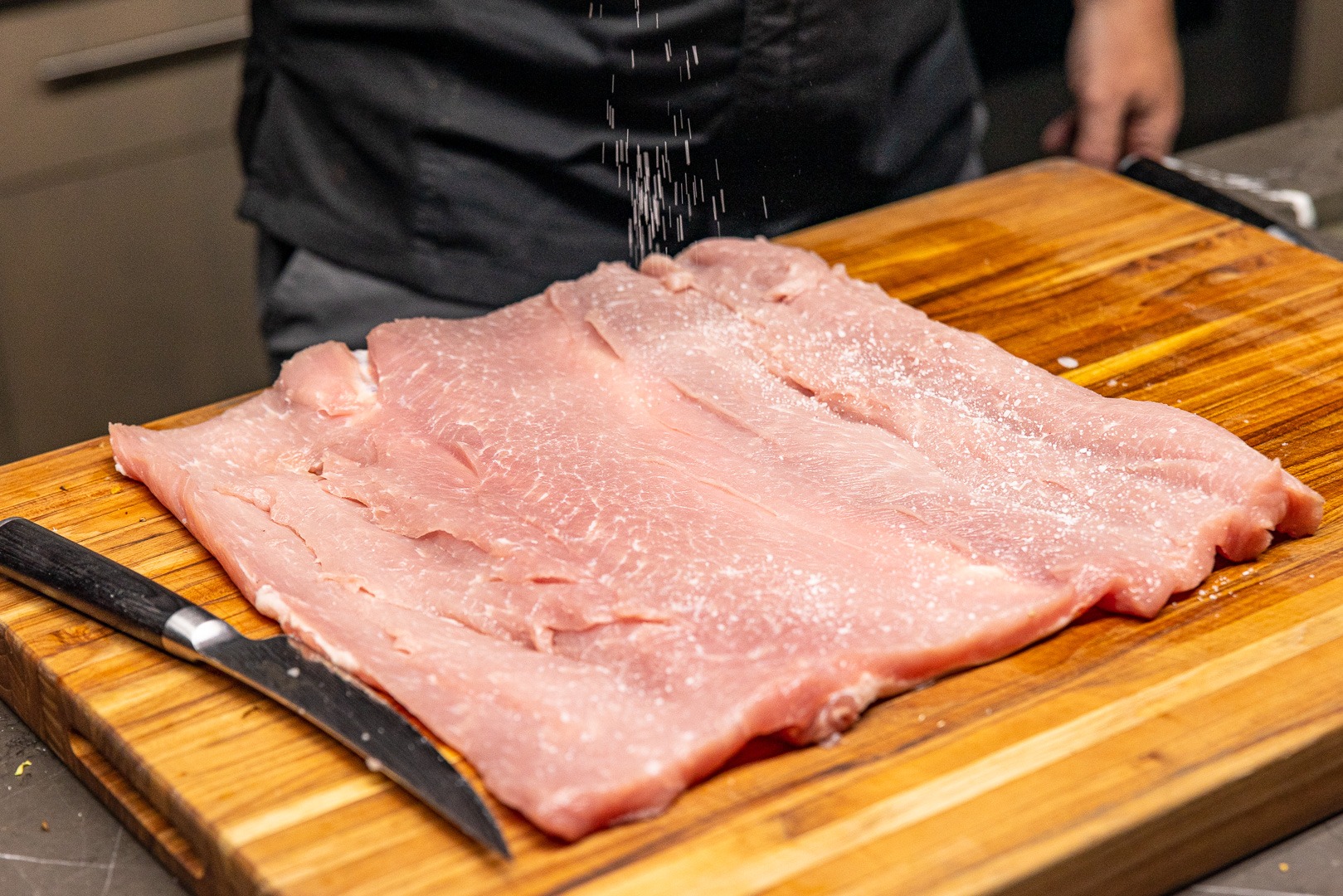
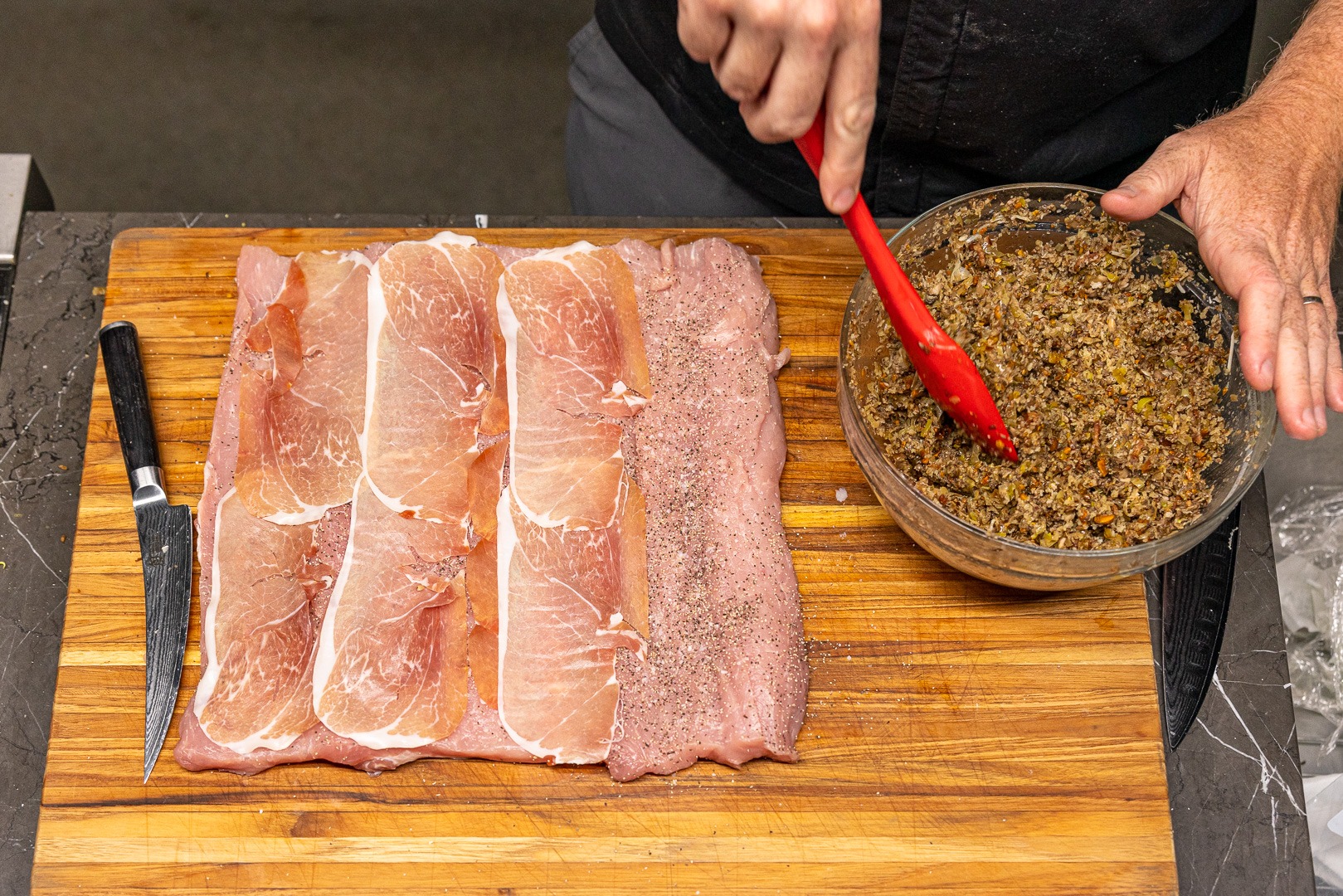
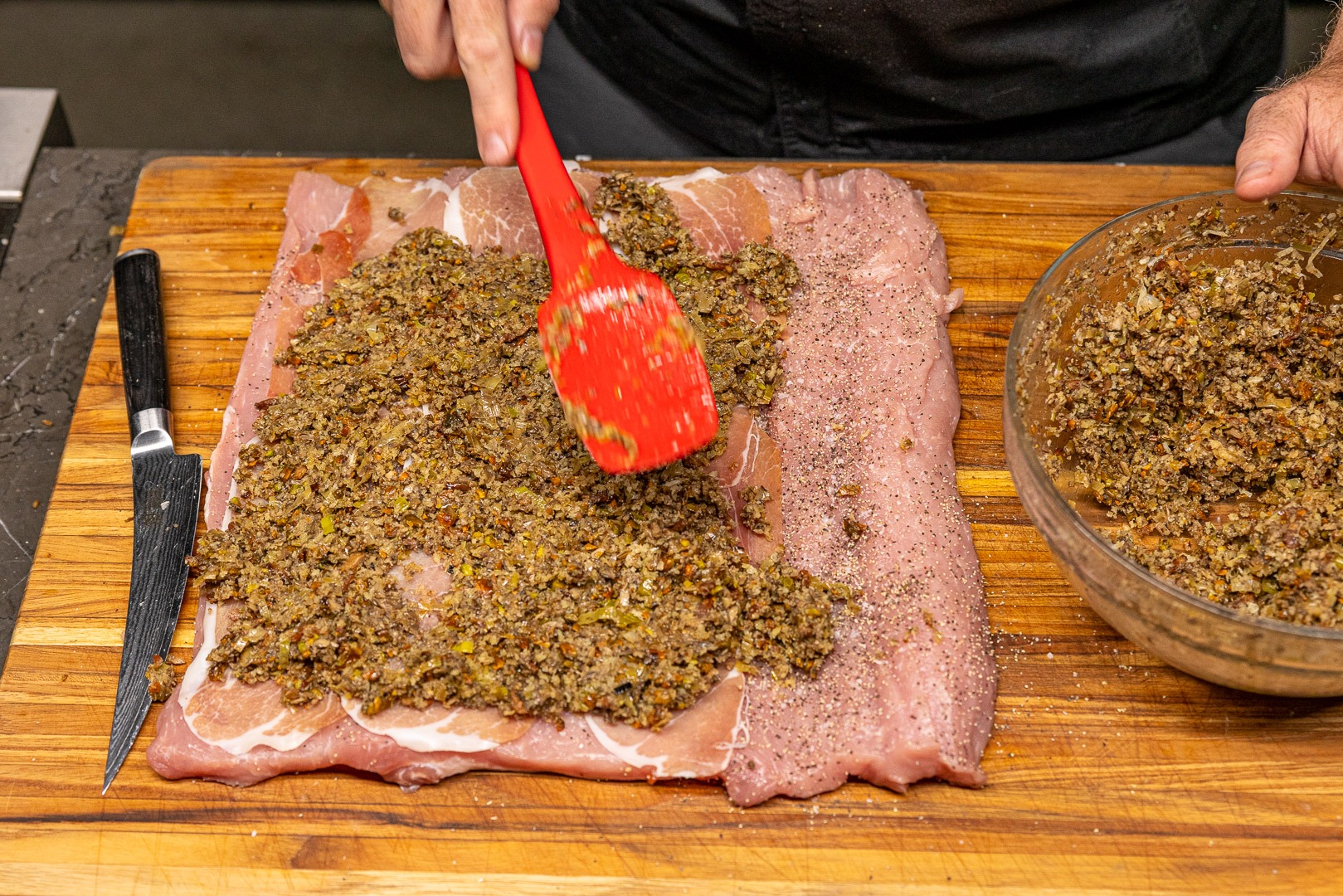
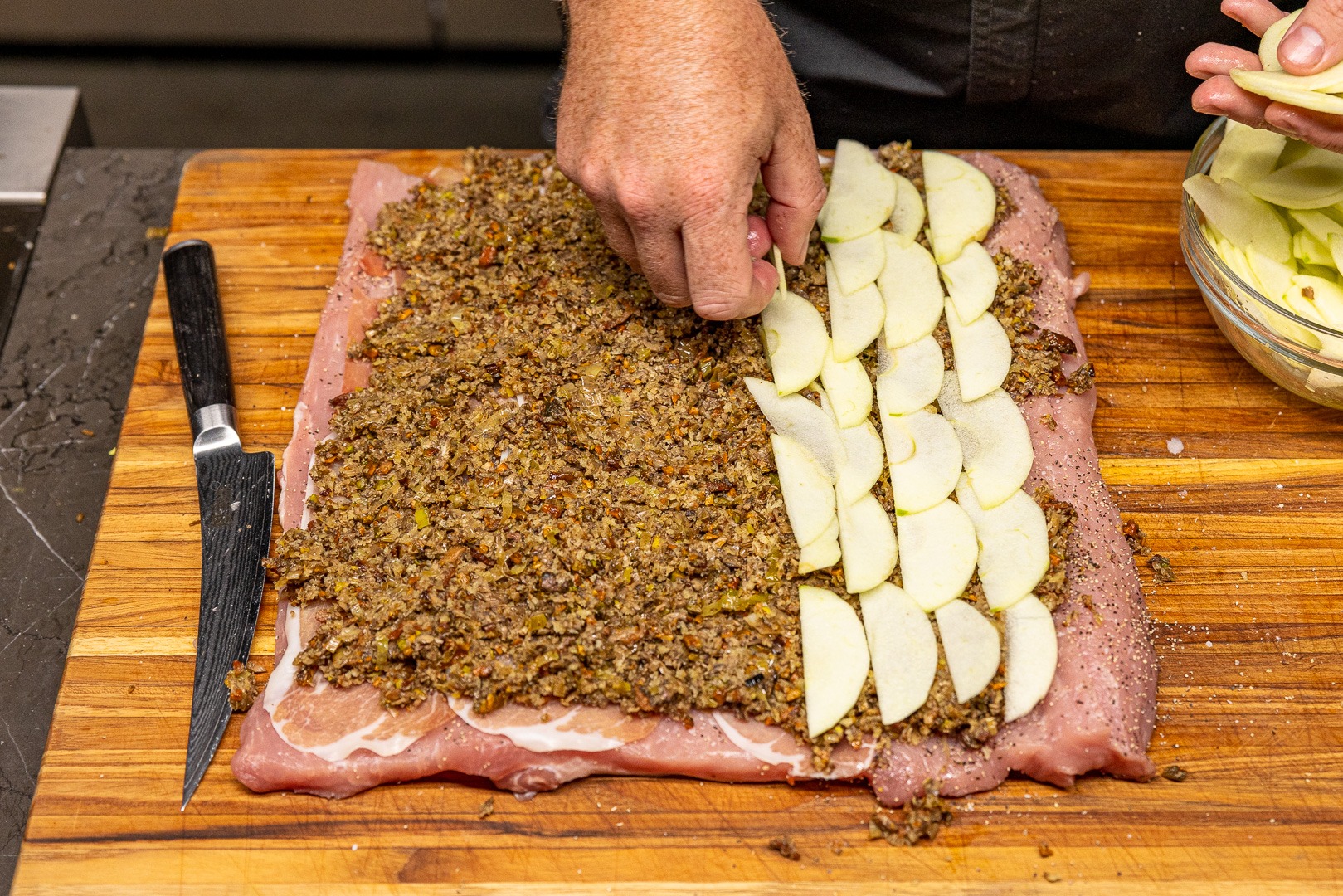
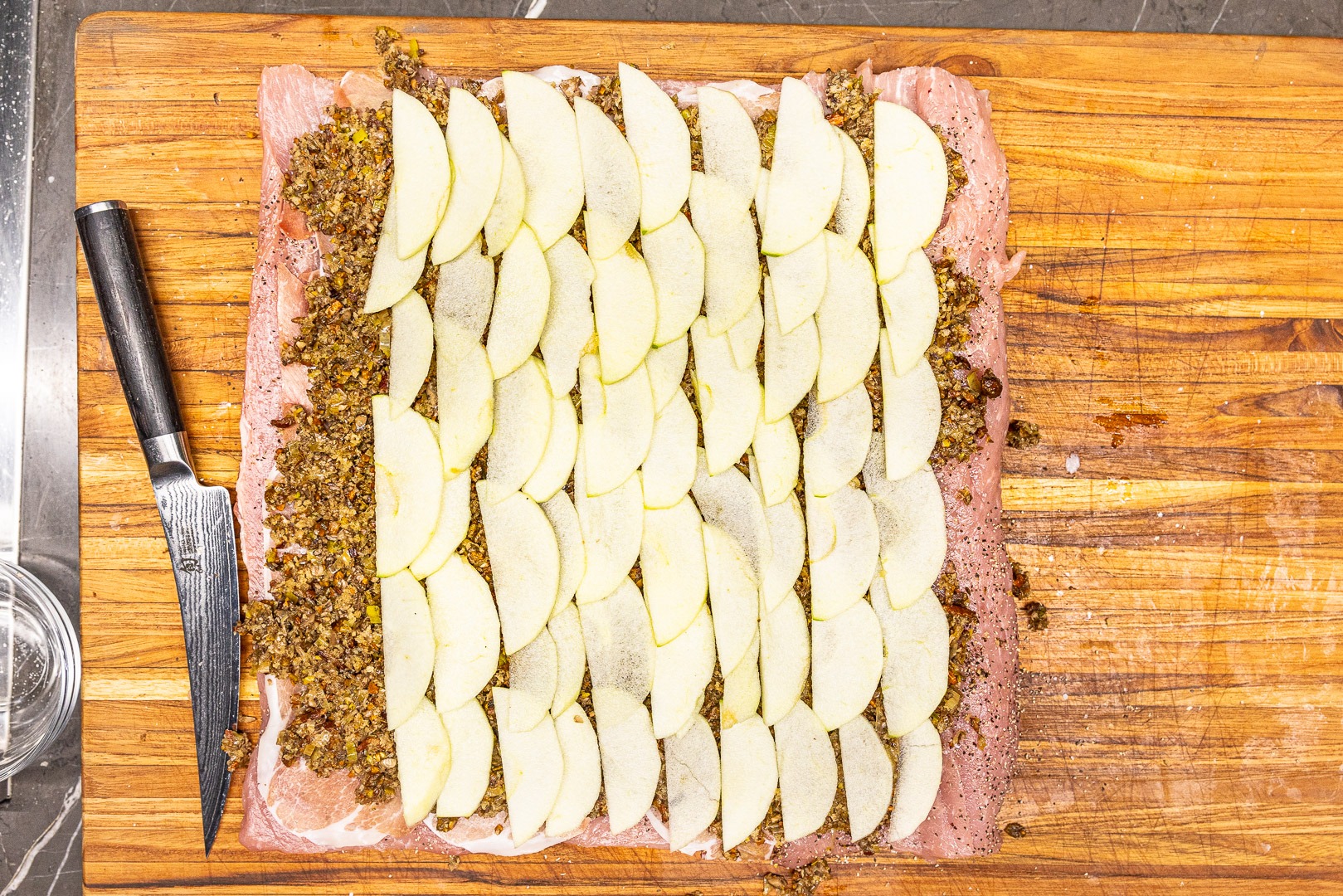
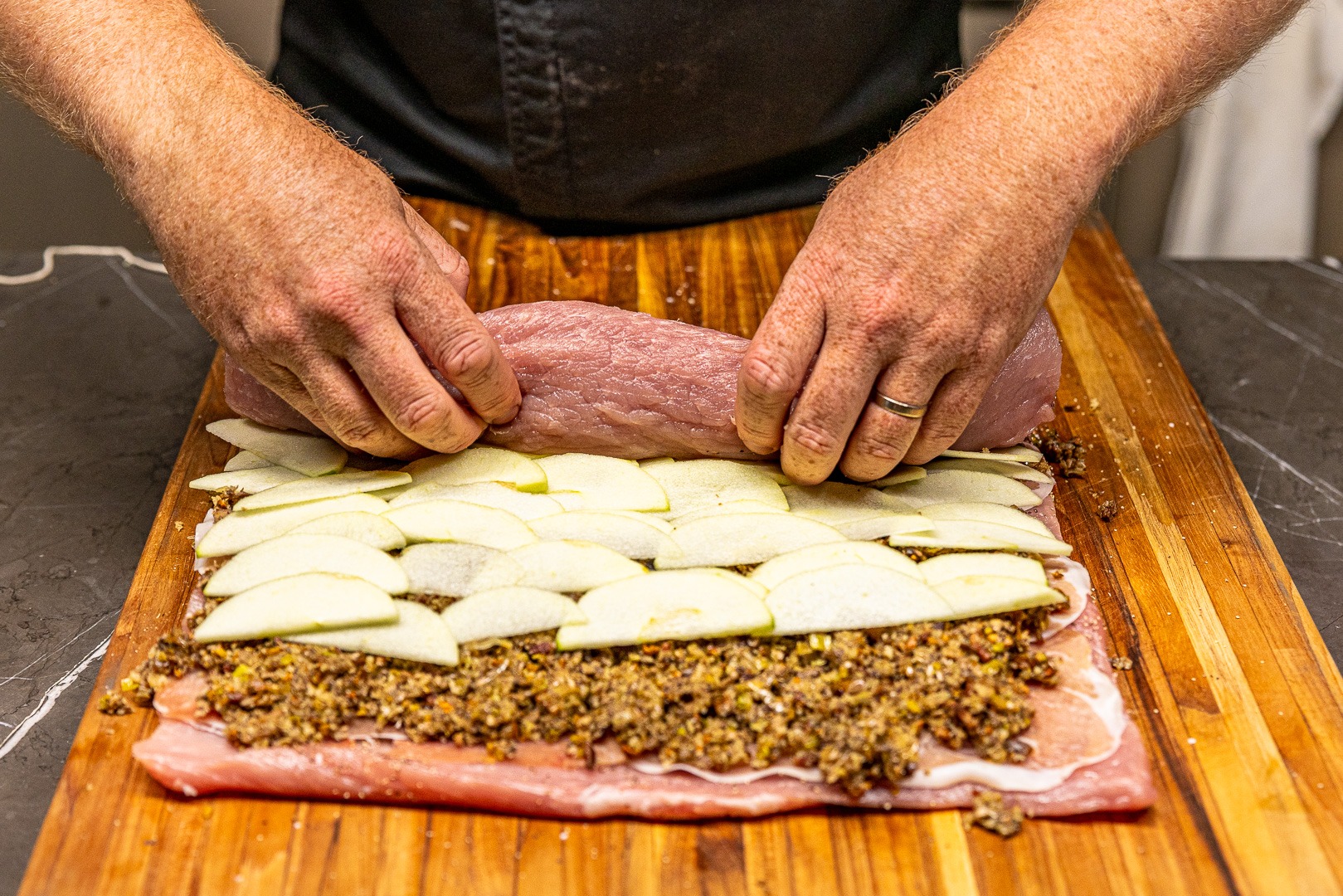
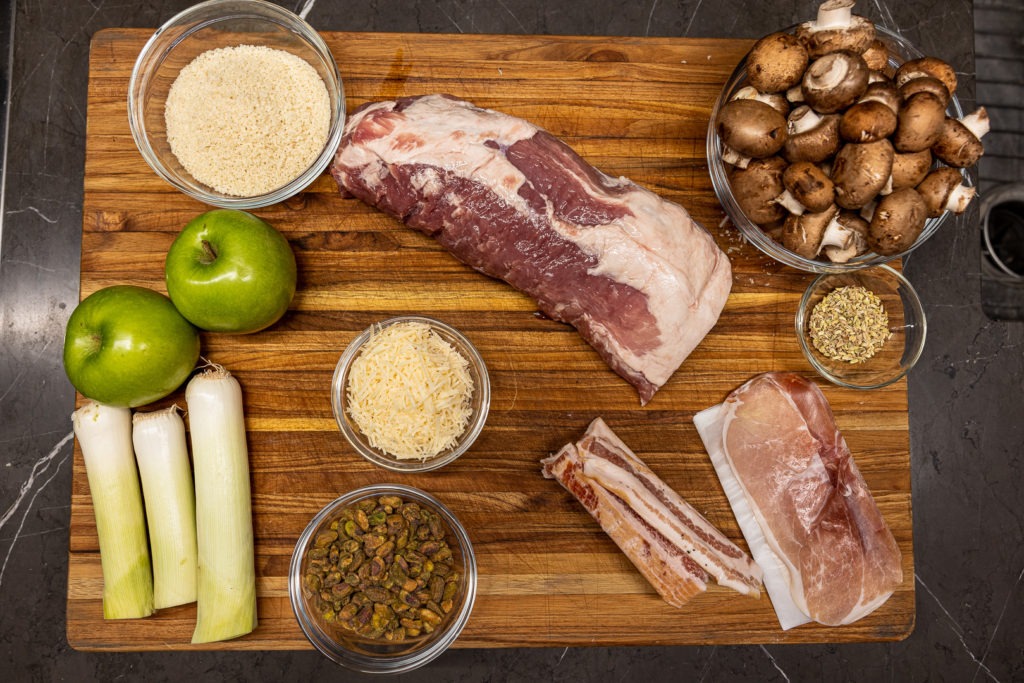
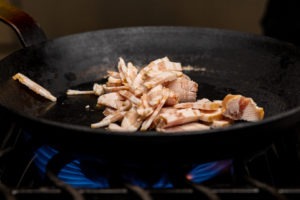
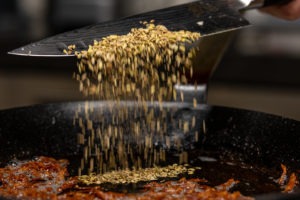
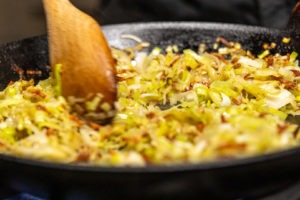
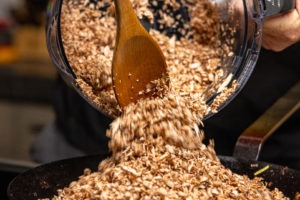
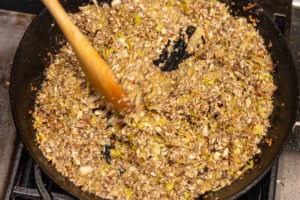
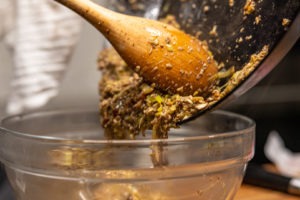
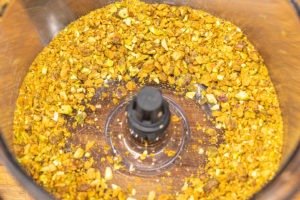
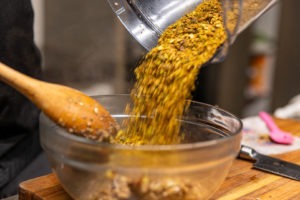
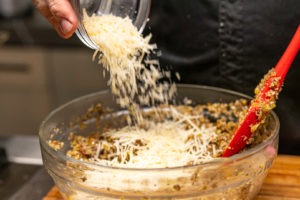
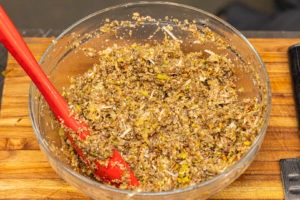
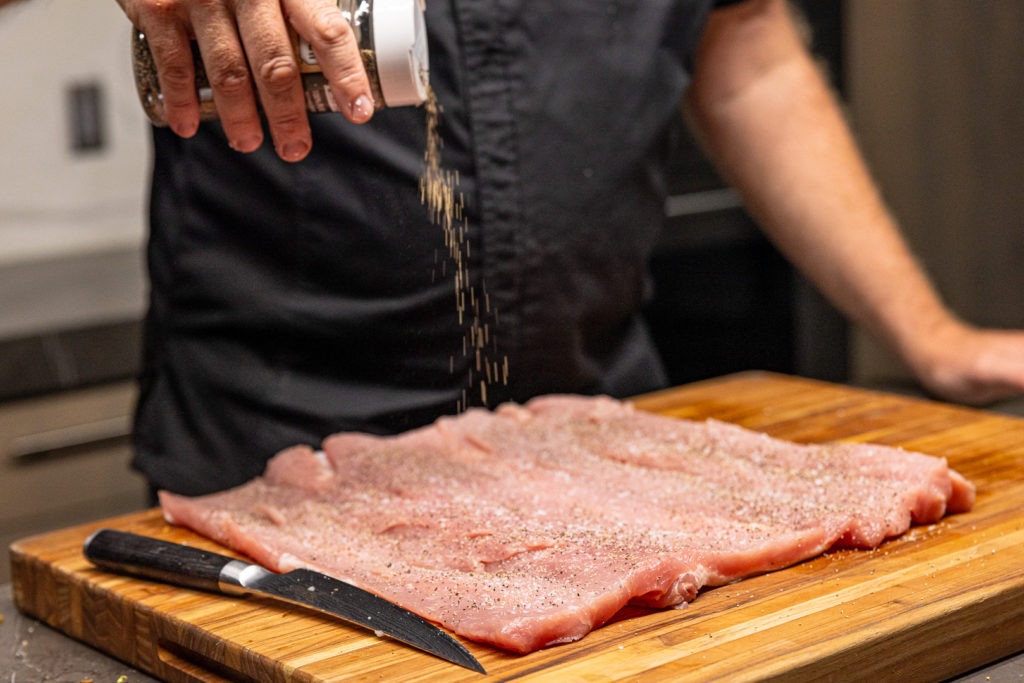
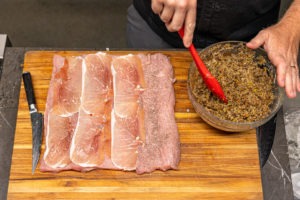
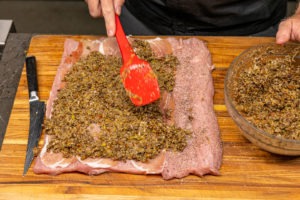
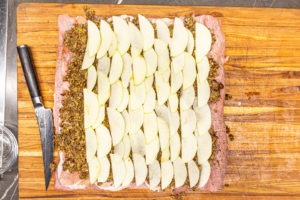
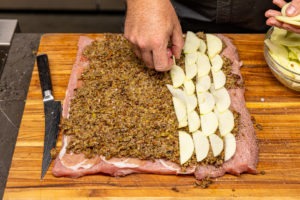
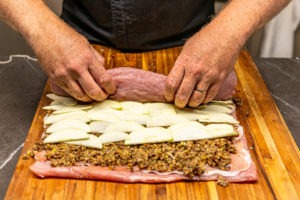
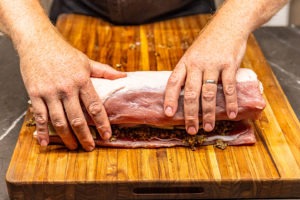
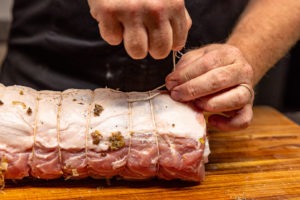
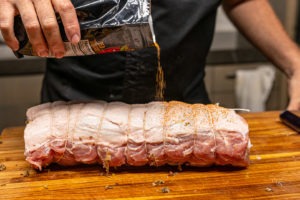
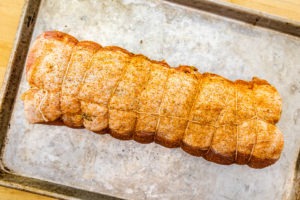
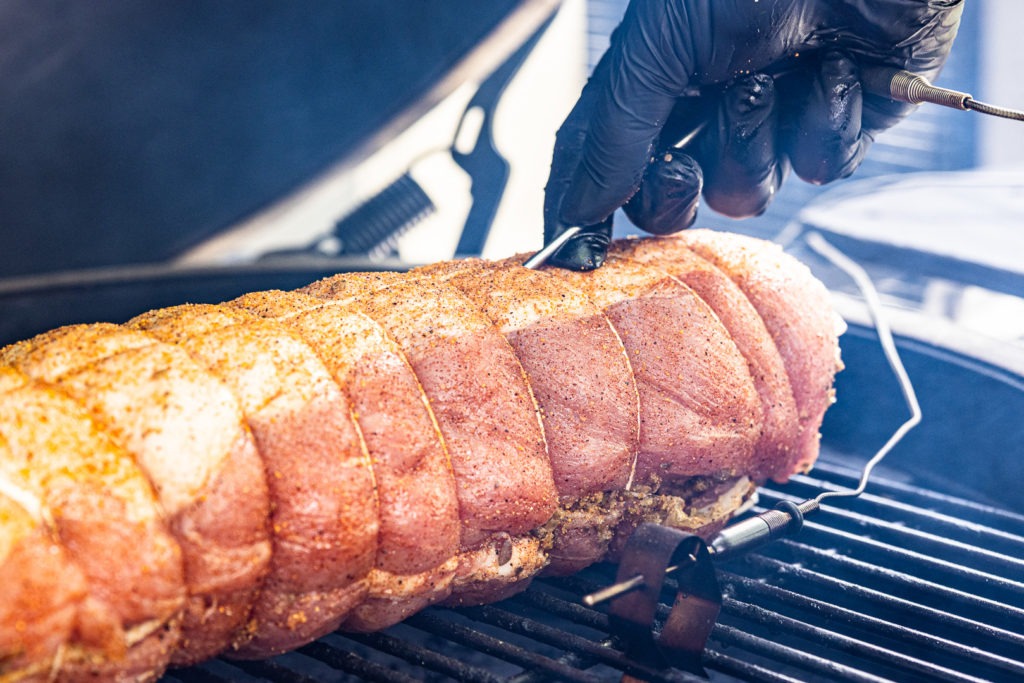
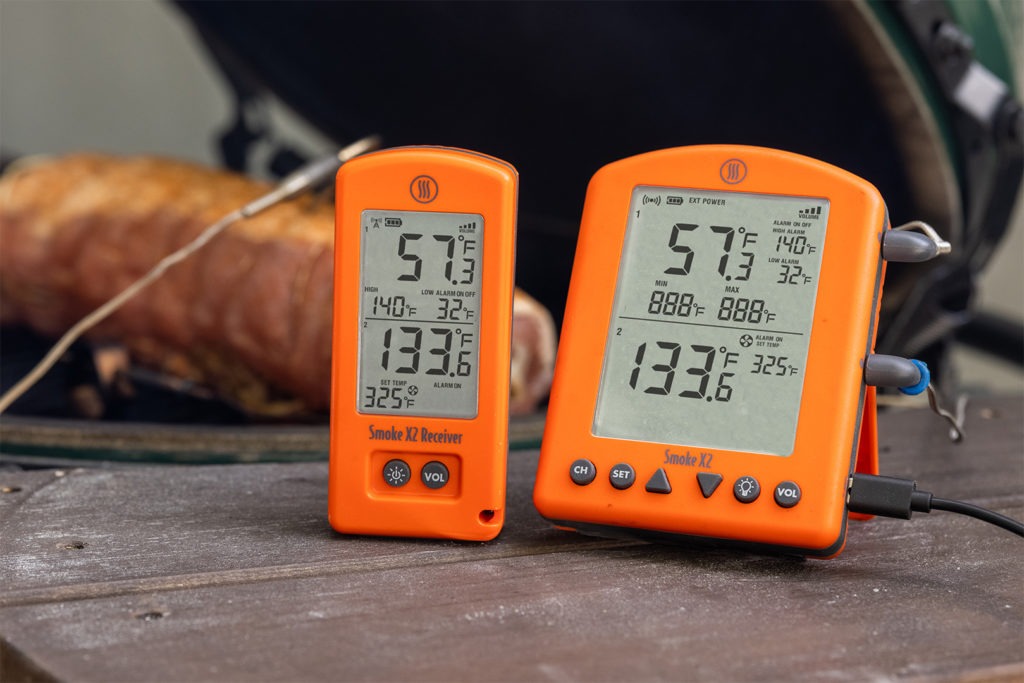
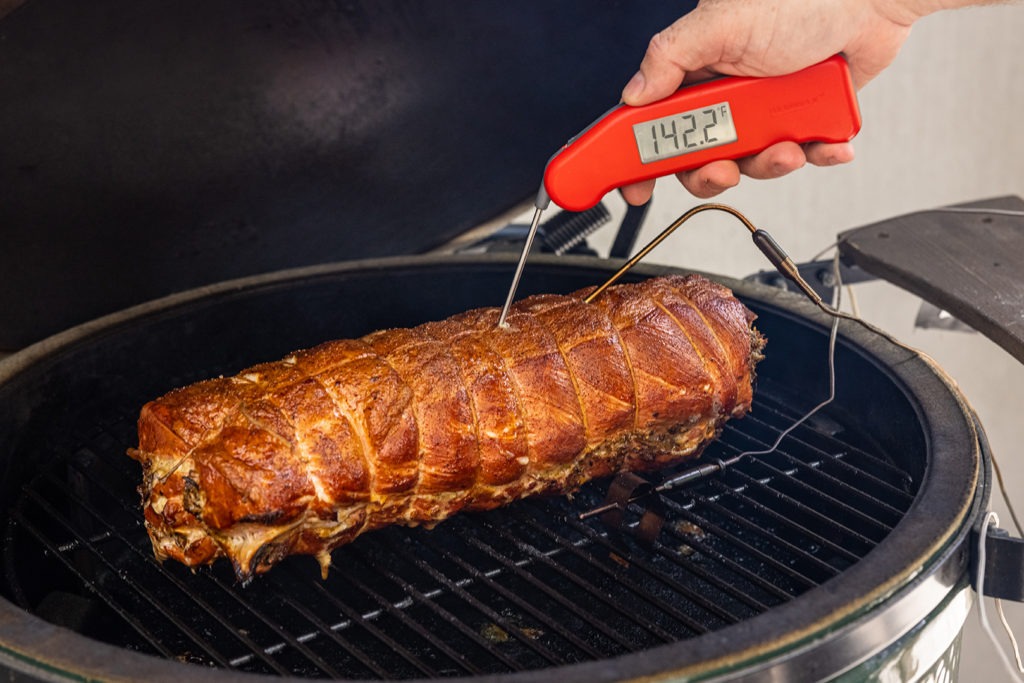

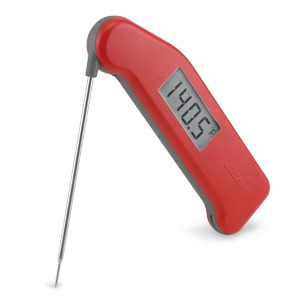
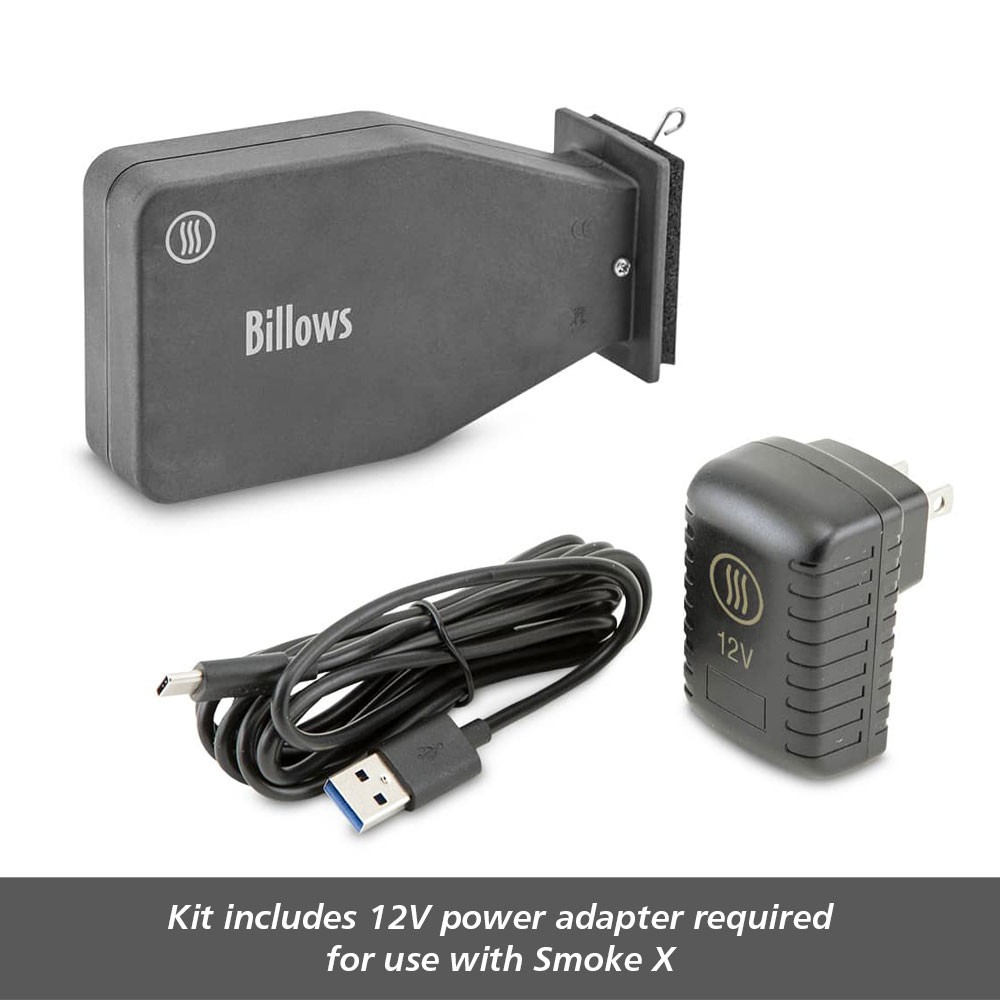
You say you doubled the stuffing ingredients from the original recipe. Does the listed ingredients reflect the doubled amount or does one have to make twice as much as the listed ingredients?
Terryk,
Thank you for your comment! The recipe in the post is a single batch of filling as written in Master of the Grill–it does not reflect a doubled amount. We used double what is listed in our blog post for a 5 pound roast.
Thank you,
-Kim
Looks nice. I’ll have to cut the ingredients a bit and try this with a pork tenderloin.
Chris,
Great idea! This would work well with a tenderloin too–it’s just on a smaller scale.
-Kim
This looks wonderful. You noted that you doubled the recipe for the filling. Has the recipe that appears here already been doubled, or will I need to double what is shown to get the same results that you did?
Jane,
Thank you for your comment! The recipe in the post is a single batch of filling as written in Master of the Grill. We used double what is listed in our blog post for a 5 pound roast.
Thank you,
-Kim
This recipe sounds amazing.
One question I have, could i just use my heat deflector with my smoker rather than setting up ‘two-zone’ fire?
Thanks,
Peter
Peter,
Yes, your smoker should work well too as long as you keep it in the same 300-325°F temperature zone.
Thanks!
-Kim
Can I use my Traeger grill to cook the loin as long as the temps remain at 300-350?
Thanks, Kent
Yes!
Would this work on a pellet smoker? If so, what temperature would you recommend?
Yes, 300°F.
I made stuffed pork loin before and when I cut it, the filling kept spilling out. I used a variety of cutting methods including an electric knife, serrated knife, non-serrated, etc. to reduce the pressure. Any hints on keeping the stuffing in place?
The breadcrumbs actually help a lot with that. It’s more about making the filling firm enough to hold together more than about cutting it right. That being said, the very sharpest knife you have is the way to go so that it won’t squish out.
Honestly I was very excited when I seen this recipe, but! after it was completed, said and done. It really isn’t very good. the flavours and the ingredients don’t go together. For me it wasn’t good. I ended up trying to remove all the stuffing and trying to save the loin for something else.
Kerry,
I’m sorry you didn’t like it—we thought it was absolutely delicious. Of course, taste is a very personal thing, so not every recipe will work for every person. Regardless, I hope you can take this method and find a flavor profile you like better.